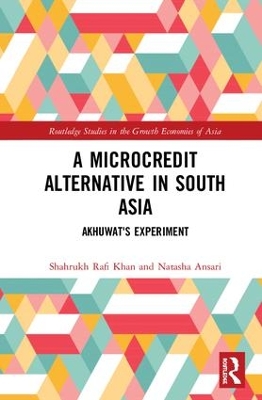Routledge Studies in the Growth Economies of Asia
2 total works
A Microcredit Alternative in South Asia
by Shahrukh Rafi Khan and Natasha Ansari
Microcredit took the development world by storm as a tool for poverty alleviation in the 1980s. After being hailed as a panacea, a few decades on it started being forcefully criticised based on its practice.
This book explores Akhuwat (literally brotherhood), a rapidly growing Pakistani NGO formed in 2001, which addresses the shortcomings of conventional microfinance. Its vision is of a society built on empathy and social solidarity and its mission is that of creating self-sufficiency among the entrepreneurial poor. This book examines whether Akhuwat fulfils its promises of not pushing loans or encouraging clients to get on a debt treadmill and helping them to avoid high debt burdens by charging no interest and easing repayment terms. Conventional microcredit organizations are criticised for losing sight of the original mission of poverty alleviation by engaging in empire building and Akhuwat’s goal is to avoid this by embracing an alternative strategy of scaling up. Finally, this book also analyses Akhuwat’s approach as being gender sensitive and embracing all religions, castes and ethnicities.
Based on fieldwork designed to assess if Akhuwat is the microcredit alternative it claims to be, this book will be of interest to scholars of poverty and development studies in general and microcredit in particular.
This book analyses economic successes in South Asia and the reasons why they emerge by offering an in-depth analysis of a few case studies against the backdrop of overall policy context and economic performance of these countries.
Offering a brief comparative review of South Asia in a global context, the book shows that the region remains an economically and socially lagging region. The author argues that within South Asia, most countries demonstrate examples of economic or social success. This book explores such successes that provide lessons for other South Asian countries and beyond. Case studies include the textile industry and microcredit in Bangladesh, information technology in India, forestry management in Nepal, surgical and sports goods in Pakistan, and human development in Sri Lanka. At the macro level, the book discusses India’s catch-up growth first given the country’s global importance and because of the prominence of the debate on its catch-up growth to development economics.
A novel addition to the literature with its focus on successful initiatives with broad policy implications, this book will be of interest to researchers in the field of development economics, development studies and South Asian Studies, in particular South Asian policy.

